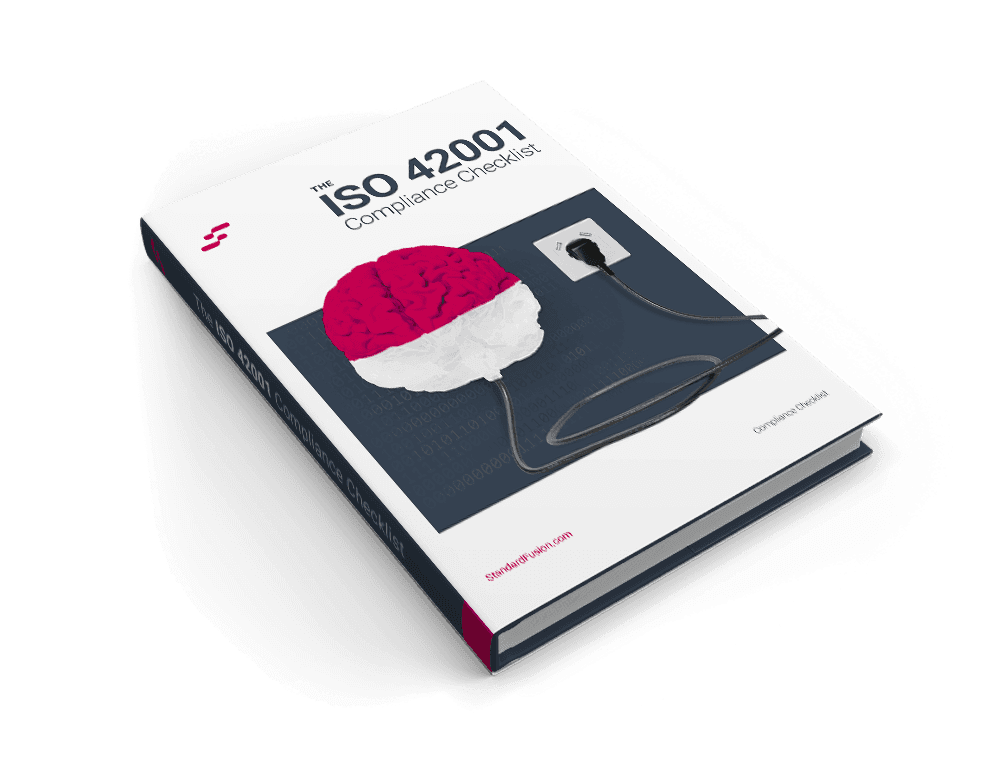Published on: Apr 28, 2020
| Updated: Mar 10, 2025
Difference between FISMA vs FedRAMP Compliance
For Cloud Service Providers (CSPs) and organizations intending to work with United States Federal Government agencies that process and store government data, obtaining proper certification is essential. The two most important certifications are the Federal Risk and Authorization Management Plan (FedRAMP) and the Federal Information Security Management Act (FISMA).
FedRAMP is a security certification for CSPs that provide cloud services to federal agencies. FISMA is a related certification that requires federal agencies and contractors to meet information security standards. Both standards share security guidelines as identified by the National Institute of Standards and Technology's: Special Publication 800-53 (NIST SP 500-83). They also have several differences such as the authorization process and who the framework applies to.
What is FISMA?
FISMA is the Federal Information Security Management Act, first enacted in 2002. It contains compulsory requirements for the security of government information systems, that also apply to third-party service providers.
A fundamental requirement of FISMA was a risk management focused approach to information security. FISMA was updated in 2014, pivoting from constant reporting to threat monitoring, while compliance and reporting breaches shifted to scheduled audits. The update also gave the Department of Homeland Security responsibility for overseeing FISMA implementation.
Who Needs FISMA Compliance?
While FISMA compliance is mandatory for government agencies and contractors, its risk management approach is beneficial to any organization that needs protection from cyber threats. The regulatory requirements in FISMA represent industry best-practices that better prepare organizations to address risks and respond to breaches.
Organizations providing non-cloud services or primarily working with a single agency may find FISMA more appropriate. This framework ensures that they meet stringent security standards, aligning their operations with federal expectations.
What is the FISMA Compliance Process?
The National Institute of Standards and Technology (NIST) produced the security guidelines outlined in FISMA. Vendors being evaluated against FISMA are categorized in accordance with the Standards for Security Categorization of Federal Information and Information Systems (FIPS-199) for low, moderate or high impact. Companies must then implement the recommended information security controls as defined in NIST SP 800-53 which can be assessed by a government agency or third parties.
The process for obtaining FISMA compliance consists of the following stages:
Information system inventory: organizations must keep a list of all information systems in use and identify how these systems are integrated within their network
Risk categorization: organizations must categorize information in order of risk to ensure that sensitive information is given the highest level of security
System security plan: organizations must keep a security plan which is regularly maintained and updated
Security controls: NIST SP 800-53 contains 18 categories of security controls that can be implemented for FISMA compliance. Organizations are only required to implement controls that are relevant to their systems
Risk assessments: organizations are required to assess risks at the organizational level, business-process level, and information system level
Certification and accreditation: compliant organizations are accredited and subject to annual reviews to retain accreditation
What is FedRAMP?
FedRAMP, established in 2011, provides a standardized approach to security assessment, authorization, and continuous monitoring for cloud products and services used by federal agencies. This program plays a critical role in ensuring that cloud services meet rigorous security requirements before they can be utilized by government entities.
FedRAMP is a security certification for Cloud Service Providers (CSPs) that want to provide cloud services to United States government agencies. To become certified, CSPs must follow the information security framework when creating or adapting their existing mitigating processes, which are referred to as controls. FedRAMP certification can be extremely beneficial for CSPs as it provides access to highly desirable government contracts. While the requirements are stringent, once a CSP is FedRAMP certified, it can work with multiple agencies without repeating the certification process.
Conversely, cloud service providers aiming to work with multiple federal agencies will likely need to pursue FedRAMP authorization. This framework is designed specifically for those looking to offer cloud-based solutions across various government sectors, streamlining the process to ensure compliance and security.
There are two categories of FedRAMP certification: Provisional Authority to Operate (JAB-PATO) and an Agency Authority to Operate (ATO). JAB-PATO is more stringent and authorizes a CSP to work with any government agency. ATO is less stringent and is suitable for CSPs that intend to work with one or two agencies.
There are two categories of FedRAMP certification:
Provisional Authority to Operate (JAB-PATO): This is more stringent and authorizes a CSP to work with any government agency.
Agency Authority to Operate (ATO): This is less stringent and is suitable for CSPs that intend to work with one or two agencies.
What's the difference between FedRAMP & FISMA?
When organizations need to decide between FISMA and FedRAMP, several factors must be taken into account:
Service Deployment
Understanding whether your service is cloud-based or on-premises is crucial. This distinction can significantly influence the choice of compliance, as FedRAMP is predominantly geared towards cloud services, while FISMA can apply to both.
Compliance Requirements of Federal Agencies
Different federal agencies might mandate adherence to specific security standards. Some agencies might require services to be compliant with either FISMA or FedRAMP, depending on their architecture and security needs. FISMA compliance requires vendors to implement minimum recommended information security controls as defined in NIST SP 800-53. Vendors evaluated under FedRAMP controls have defined specific requirements for each control that a CSP must implement.
FISMA assessments are performed by government agencies or third parties while FedRAMP must be performed by a 3PAO. This distinction highlights FISMA's flexibility, allowing assessments to be conducted internally or by external entities. In contrast, FedRAMP mandates the use of an accredited Third-Party Assessment Organization (3PAO). This requirement ensures a standardized approach, fostering consistency across all cloud service providers pursuing FedRAMP authorization. By adhering to these structured processes, both FISMA and FedRAMP maintain rigorous standards in evaluating compliance and security.
Resource Allocation
The path to achieving FedRAMP compliance can be resource-intensive. Organizations must prepare for a comprehensive assessment process, which demands significant time and manpower. Conversely, FISMA might require fewer resources, but this can differ based on the complexity of the services offered.
Evaluating ROI
For cloud service providers aiming to expand their federal clientele, FedRAMP certification is often a strategic investment. This accreditation can unlock a wider array of federal contracts and potentially yield a substantial return on investment. Organizations should weigh the potential for new business against the costs of achieving and maintaining compliance.
Certification Rigor: A Comparative Look
While both frameworks demand robust security measures, FedRAMP is generally considered more stringent. This stems from its standardized approach, which not only demands specific requirements for each control but also facilitates broader applicability across multiple agencies. FedRAMP's rigorous standards are designed to ensure consistent security across cloud service providers, making it a preferred choice for agencies seeking comprehensive protection. This contrasts with FISMA's minimum control recommendations, providing a clear picture of how the certification rigor differs between the two.
Key Similarities
Common Foundation: Both use NIST guidelines as a foundational element, particularly the NIST Special Publication 800-53.
Risk Management: Emphasis on evaluating and managing risk, highlighting the necessity of strategic and ongoing security practices.
Continuous Monitoring: They both stress the significance of continuous monitoring and reporting, recognizing that security is an ongoing process rather than a one-time achievement.
Ultimately, organizations must weigh these differences to determine which framework best aligns with their security goals and compliance needs.
What is the Process for Obtaining FISMA Compliance?
The process for obtaining FISMA compliance consists of the following stages:
Information system inventory: organizations must keep a list of all information systems in use and identify how these systems are integrated within their network.
Risk categorization: organizations must categorize information in order of risk to ensure that sensitive information is given the highest level of security.
System Security Plan (SSP): organizations must develop and maintain a security plan that outlines the system’s security requirements and controls. This plan should be regularly updated to reflect any changes.
Security controls: NIST SP 800-53 contains 18 categories of security controls that can be implemented for FISMA compliance. Organizations are only required to implement controls that are relevant to their systems.
Security Assessment Report (SAR): This document details the results of the security assessment, providing insights into the security posture of the organization.
Plan of Action and Milestones (POA&M): organizations must address any identified vulnerabilities or areas for improvement and document these in the POA&M. This document is crucial for planning and prioritizing security measures.
Risk assessments: organizations are required to assess risks at the organizational level, business-process level, and information system level.
Certification and accreditation: Compliant organizations are accredited and subject to annual reviews to retain accreditation.
By integrating these documentation requirements into the compliance process, organizations can ensure a comprehensive approach to meeting FISMA standards.
How Do I Obtain FedRAMP Compliance?
There are three main steps for CSPs to obtain FedRAMP or JAB-PATO or ATO certification once they have been pre-authorized:
Document: The compliance process starts with a CSP categorizing its services in accordance with NIST's publication: FIPS-199, into low, moderate or high impact. CSPs are then required to produce a System Security Plan (SSP) that describes how it meets the required controls as defined by NIST SP 800-53.
Asses: A third-party assessment organization (3PAO) designs and conducts a security assessment plan to test the CSP's security controls. The CSP then creates a Plan of Actions & Milestones (POA&M) based on the assessment's findings
Authorize: The agency or agencies intending to use the CSP's services review the 3PAO's security assessment report and approve the potential risk associated with the system and grant either an ATO or JAB P-ATO. Companies are then listed in the FedRAMP Marketplace as authorized vendors.
Managing FedRAMP and FISMA Compliance
GRC tools can be used to make FedRAMP and FISMA compliance significantly easier to obtain. GRC tools integrate with existing systems and tools to manage compliance-related tasks from a single platform. This allows controls and documentation to be managed from a single data source to streamline the process and ensures up-to-date information is on-hand.
Compliance reports can be generated at will so you can allocate your valuable time, allowing gaps to be addressed before a breach occurs. Most GRC tools can manage multiple compliance standards at the same time and are compatible with a wide range of systems.
To navigate the complexities of FISMA and FedRAMP compliance effectively, consider partnering with experts who can guide you through the entire process. These professionals can:
Assess your current security posture to identify areas of improvement.
Develop and implement tailored compliance strategies that align with your organization's needs.
Prepare necessary documentation to meet federal requirements efficiently.
Conduct gap analyses and remediation planning to address any vulnerabilities.
Provide ongoing support for continuous monitoring and reporting to ensure long-term compliance.
By leveraging both GRC tools and experienced professionals, your organization can streamline processes, manage compliance efforts seamlessly, and maintain a strong security posture. For further assistance, consider reaching out to compliance experts who can offer personalized support and guidance tailored to your organization's unique needs.
How To Determine Which Information Security Risk Compliance You Need
Compliance with United States federal government standards like FedRAMP and FISMA require significant investment but grants access to sought after government contracts. As FISMA is based on a best-practice risk management approach, certification can be valuable to any organization that needs to manage information security risks.
Using a centralized GRC tool, the time and cost of becoming FedRAMP and FISMA compliant can be significantly reduced through the automation of compliance-related tasks and reporting.







